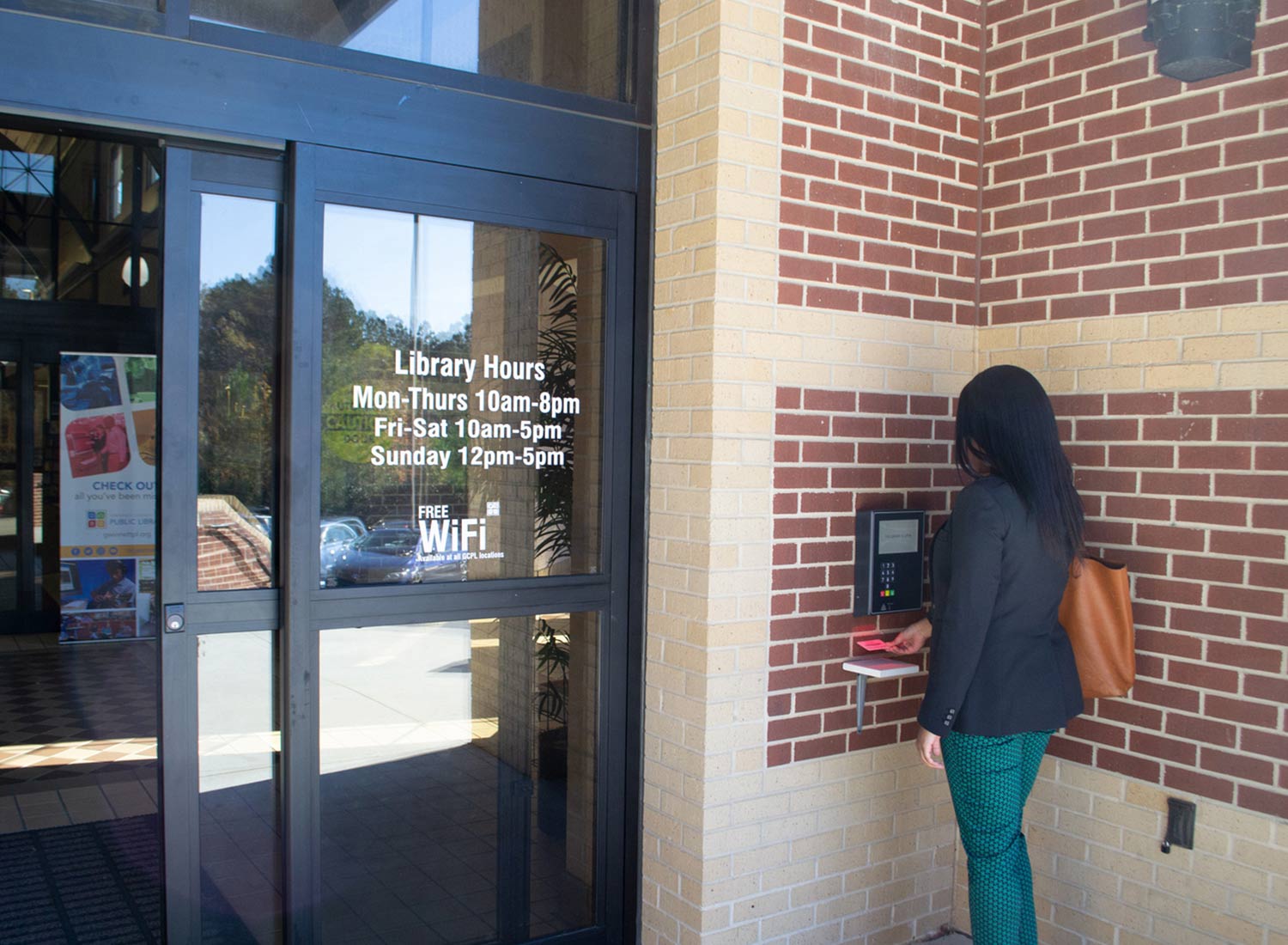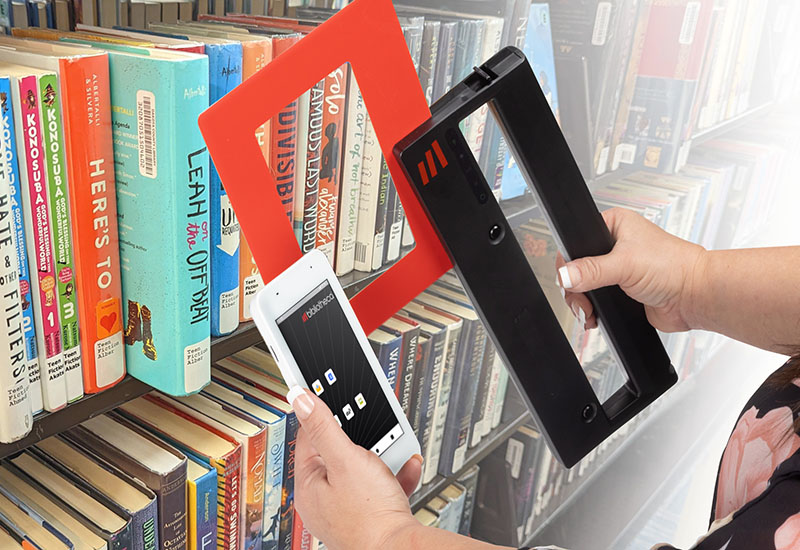RFID in Libraries: technology that helps extend impact
RFID in Libraries: technology that helps extend impact
Why RFID?
In most libraries, staffing budgets aren’t keeping pace with fast-growing communities and the accompanying increase in circulation growth. Libraries are expected to increase their programme offerings and improve customer service without adding personnel.
Many of these libraries are turning to Radio Frequency Identification (RFID) technology to improve the speed and accuracy of circulation and shelving functions, thereby freeing library staff to provide direct service to its users. It also helps protect a library’s collection and ensures that the community gets the most value out of the library. Installing an RFID system requires an investment, but that investment is usually recouped within two years – and the benefits of the system can last for a decade or more.
Some new technologies can be intimidating for users, but RFID is not one of them. The quick and easy benefits of RFID ensure both intuitive and satisfying experiences for library staff and users. RFID provides great value to librarians and is simple enough even for young children to use.
What is RFID?
In the simplest terms, an RFID system has two parts: a tag and a reader. Information is encoded on the tag; the RFID reader accesses that information and passes it along to the person or system that needs it.
Within the tag, there is a microchip that holds information and an antenna. This assembly is usually covered with a protective overlay. The durability of the overlay is determined by the application. If your tag is being placed inside a book, paper provides adequate protection; if the tag is affixed to a jet engine part, something more resilient would be required. The back of the overlay has an adhesive, so the assembly can be permanently affixed to an item. In a book, the final assembly is unobtrusive, usually 2 inches or 50 millimetres square and very thin. The RFID tags placed on library items are passive, meaning they have no batteries or other power source. The energy needed to power and read the tag comes from the reader.
An RFID-equipped library usually has readers at the circulation desk and at self-service kiosks with additional readers installed in the security gates near the entrances and exits. These devices detect books or other media that haven’t been checked out. Many libraries also use RFID technology in an automated returns and materials handling system. Productivity can be further enhanced with a hand-held reader, which is used to pull holds and transit materials after check-in, scan shelves for misplaced books or take a full inventory of the collection.
How does RFID work?
RFID readers emit signals that search for a tag. When a tag comes within range, the signal hits it, “awakens” the tag, and provides the power for the tag to respond with the kind of information that the RFID reader wants.
If a library visitor is checking out a stack of books, each tag instantly responds with its unique item ID number, which is the same one that appears on the barcode used by many libraries. The RFID system relays the ID number to the library management system, which retrieves the title, checks it out and generates a receipt.
If a visitor is returning a book, the tag responds with the ID number and the system credits the user’s account. If the library has an automated materials handling system, it will direct the book to the appropriate bin for reshelving.
If a librarian is scanning shelves for inventory, a hand-held reader will illuminate and beep when it finds a missing or mis-shelved item as well as any materials you’ve indicated as a candidate for weeding.
If someone starts to leave the library with an item, the reader asks the tag if the item has been checked out. If the tag responds negatively, the gate reader will sound an alert, reminding the user to return the item or check it out. An alert can also be sent to library staff, identifying the exact item that is causing the alarm.
The range of an RFID system is tailored for each application in which it is used. In a library, where high-frequency RFID systems are used, they read tags that are no more than a few inches to a few feet away, allowing for accurate item processing. In a large warehouse, systems need to be able to read tags that are on pallets up to 15 feet away or moving along conveyance systems at a high rate and utilise ultra-high frequency RFID technology to accomplish this.
RFID has a couple of advantages over using barcode technology. Each time a barcoded item is checked in or out, the user or staff member must present it individually to the reader and align it with a scanner. This is a time-consuming process compared to RFID technology, which allows several items to be processed at once without requiring alignment. Barcoded items sometimes require multiple scans before they are read. And barcodes can be scratched or rendered unreadable due to normal wear-and-tear, due to their placement on the outside of a library item.
How does RFID benefit library visitors?
Faster, easier checkout and check-in. A stack of RFID-tagged items can be read and checked out simultaneously, by a librarian or a user. Because the technology is so fast and easy to use, library visitors are more inclined to process their own transactions. Check-in is also much faster and easier with an RFID system. If RFID is paired with an automated materials handling (AMH) returns system, the productivity gains are dramatic. AMH systems can accept a returned library item, credit the user’s account, and sort the item for reshelving while the librarian is out on the library floor, engaging with library visitors.
Increased attention from library staff. For many people, the increased interaction with the library staff is the greatest benefit of RFID. When librarians spend less time on routine physical tasks, they can pay more attention to human connections and the customer experience.
A more productive visit to the library. Libraries face the astonishing challenge of keeping track of multiple resources. They hold thousands – or even millions – of individual items, each one unique, each vitally important to the person who wants it for a report or because it’s the latest work by a beloved author. With RFID, those items are accurately located so users and librarians can easily find them. In the process of converting to RFID, libraries typically get an immediate benefit from the recovery of misplaced items – often hundreds of them – that were thought to be lost.
RFID benefits staff, too. Job satisfaction greatly improves, and repetitive stress injuries decrease when librarians spend more time helping people and less time processing books and other library materials.
The library is a free institution that helps community members engage in lifelong learning activities and is considered a safe place for everyone, regardless of social, cultural, and economic backgrounds. Libraries are tasked to create more programmes, partnerships, outreach, innovation and community connections every day. By improving staff productivity and satisfaction, RFID can help libraries focus on carefully crafted programmes, engaging spaces and building human connections, ensuring staff time is dedicated to outcomes with the largest community impact.
What do critics say about RFID?
The technology behind RFID is commonly accepted today. It is durable, reliable and cost-effective – which is why it is becoming increasingly popular in our day-to-day lives.
For some, privacy issues are seen as the primary concern. People want assurances that no one will be able to track their personal library activity through RFID. We understand the value libraries place on their user’s privacy and are committed to providing technology solutions that support these necessary obligations. We believe that educating libraries on the technical capabilities of RFID will alleviate much of the concern over what can and cannot be known using this technology.
RFID tags used in libraries do not contain personal information. They only program item IDs and library-related information to each tag, meaning user privacy cannot be compromised. The short range of most library RFID systems means that it is extremely unlikely that someone would be able to access the tags on books or other media once the user has checked them out of the library. Privacy can be heightened when self-checkout is combined with RFID. An inquisitive observer would have a difficult time trying to scan all the titles when a stack of items is placed on an RFID reader and instantly checked out.
Generally, the high-frequency RFID tags used in library items cannot be read at more than 18 to 24 inches from a reader antenna. With larger, specialised high-power antennas, such as those found in our RFID gate premium, tags can be read within a 3-foot range. It’s highly impractical for covert surveillance to be able to read beyond 4-6 feet. In all of our years of operating as a technology company, we don’t consider this a practical threat.
How do I encode the tag?
Putting information on an RFID tag is easy and remarkably fast. Each manufacturer has its own system. Here’s how the conversion from barcodes to RFID works when you partner with Bibliotheca:
All the equipment you need has been consolidated in an easy-to-manoeuvre conversion station that rolls between shelves, maximizing the efficiency of the conversion process. These stations are usually rented for a major conversion.
- The librarian places the item’s barcode under a barcode scanner and the information is captured.
- The station dispenses a blank RFID tag.
- The librarian places the item on the RFID workstation and adheres the tag to the item.
- The RFID workstation automatically encodes the information that was just scanned from the barcode.
- The librarian replaces the item to the shelf and removes the next item.
With Bibliotheca, the conversion process is optimally automated. There is no complex set-up, no complicated manual input of access codes or other data. Once the conversion station has been turned on, the staff member is ready to get started. Using just one station, up to 450 items can be processed in one hour. Using several stations, one library was able to convert a collection of 160,000 items in 10 days.
What are the risks?
As libraries contemplate a significant investment in RFID, board members and staff must consider the potential pitfalls. Typically, they start by researching other libraries’ experiences with RFID. When they do, they find that catastrophic failures are virtually unheard of.
Research also shows that some libraries have a smoother implementation than others, and some are more satisfied with post-implementation functionality and technical support. In most cases, problems can be avoided by taking a few simple precautions.
Consider only established suppliers: your system could last a decade or more, so you’ll need a supplier with that same kind of longevity. Ask for references.
Once you’ve decided on the best match for your needs, don’t be afraid of commitment. The most successful RFID installations result from a close working relationship between the library and a single supplier that “owns” the system. Insist that the supplier assume responsibility for hardware, software, integration with the ILS/LMS, initial training and technical service.
If the supplier is unwilling or unable to play this role, consider using another supplier. Choose a supplier that has a local or regional presence. If your technical support provider is across the continent – or on another continent – your downtime may be unacceptable.
Be attentive to system design. Because RFID systems bring immediate and dramatic improvements in productivity, staff might be tempted to overlook small deficiencies in system design. They are willing to accept what appears to be minor annoyances to enjoy the benefits as soon as possible. This is understandable but ill-advised. In a short time, small annoyances grow large. For example, some RFID systems have a clumsy interface with the ILS. The result is an overly complex circulation system and an ILS with less functionality.
Look around. There are affordable systems that don’t require you to compromise on quality and efficiency.
Choose a system that has a well-designed mobile conversion station that allows staff to efficiently and ergonomically work among the stacks, converting individual library items one at a time. This makes the process faster, easier on staff, and less disruptive for library users. Find a supplier who allows you to rent the mobile conversion station for the short time you need it during RFID implementation.
Choose a supplier who has thoroughly tested their solutions, adheres to the latest standards of quality and interoperability and has proof of compliance with local regulations.
Why Bibliotheca?
Library boards and staff have a responsibility to research the many RFID suppliers and compare their systems. After they do, they usually decide to work with Bibliotheca. Why?
Dedicated to libraries
Bibliotheca is dedicated to the development of innovative technologies and library management solutions that help sustain and grow libraries around the world. Our products are designed to provide a modern, intuitive, and seamless experience for those that use the library, wherever they happen to be – at home, on the move or within the walls of the library itself.
Longevity and partnerships with over 20,000 libraries
With 50 years’ service in the industry, we are proud of our history and accomplishments with libraries around the world. We have offices in all major continents and support libraries in more than 70 countries through our dedicated distributors. We partner with more than 20,000 unique libraries, helping them evolve their services and connect with their communities.
Innovative solutions, driven by librarians
By employing a host of degreed librarians and immersing ourselves in library trend conversations, we understand the unique management challenges that today’s libraries face.
Our innovative solutions help libraries transform perceptions, increase access to collections, and spaces, and provide engaging interactions, all with the aim of enhancing the user experience.
From our comprehensive range of RFID solutions to our cutting-edge digital eBook and eAudiobook lending service, Bibliotheca’s goal is to enhance the overall importance of libraries, empowering them to reinvent their services and encourage lifelong learning today and well into the future.
You may also like
Insights + Trends

Unlocking the Future: Discover the benefits of open+ for library
Ready to elevate your library experience? Look no further than open+!

Webinar – The Inside Story… Library Design – not just a pretty cover
Webinar the Inside Story…Library Design Get the inside scoop from Library Practitioners, a renowned and highly respected Award-winning Australian Interior Designer and other industry leaders.

The Power of Precision: DLA inventoryWand
Innovation is the driving force that propels us forward. Today, we are excited to introduce our latest breakthrough: DLA inventoryWand.

